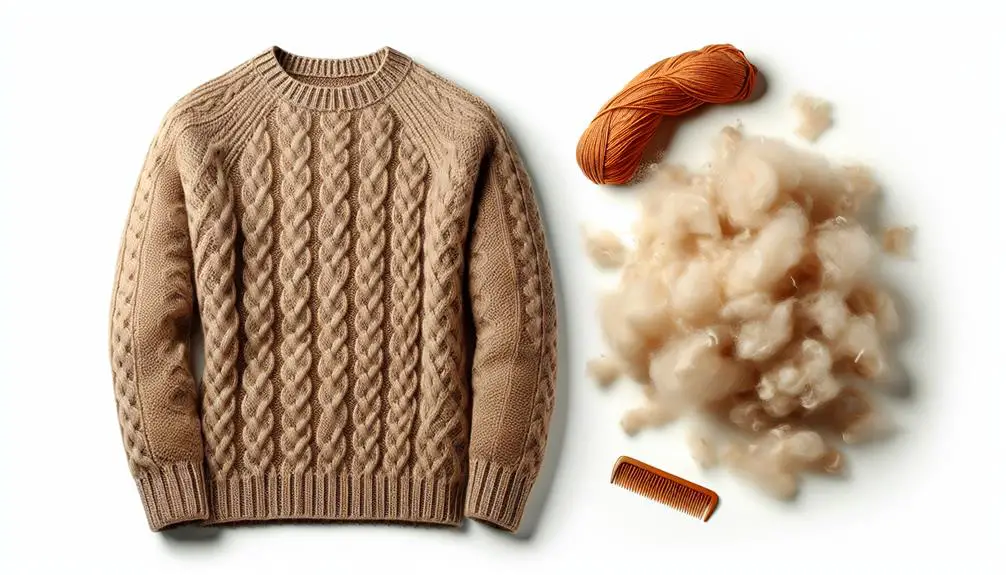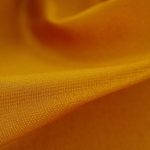Wool keeps me warm and dry, even when wet. It lasts long and resists wear. It's fire-resistant too. But I need to watch out for shrinking. Care needs are specific to avoid itchiness. If you want to know more, discover how wool can be both a cozy ally and a sensitive companion.
Table of Contents
Key Takeaways
- Wool excels in insulating properties, keeping warm and wicking moisture.
- High-quality wool is durable, resilient, and resists wear and tear.
- Wool is naturally flame-resistant, absorbs moisture, and ideal for activewear.
- Care is needed to prevent shrinkage; follow manufacturer's instructions.
- Some wool may cause itchiness, but high-quality Merino wool is less likely to irritate.
Natural Insulating Properties
Wool excels at keeping me warm in cold weather due to its natural insulating properties. The crimp in Merino wool fibers creates tiny air pockets that trap heat, offering superior insulation against the cold. This unique feature makes wool a fantastic choice for winter clothing, blankets, and outdoor gear. Additionally, wool possesses excellent moisture-wicking properties, allowing it to absorb up to 30% of its weight in moisture without feeling wet. This ability helps keep me dry and comfortable, even in damp conditions.
Moreover, wool is breathable, enabling moisture vapor to escape while still providing insulation. This prevents overheating and guarantees that I stay comfortable throughout the day. Even when wet, wool retains its insulating properties, making it a reliable option for various outdoor activities in changing weather conditions. The combination of warmth, moisture-wicking capabilities, and breathability makes wool an exceptional choice for staying cozy and dry in cold environments.
Durability and Longevity
With its reputation for durability and longevity, high-quality wool items can withstand the test of time when properly maintained. Wool, especially Merino wool known for its fine quality, is naturally resilient, allowing it to endure frequent use while retaining its shape. Compared to synthetic materials, wool garments are less susceptible to wear and tear, making them a sustainable choice for long-term use. The inherent strength of wool fibers also helps them resist pilling, ensuring that they maintain their appearance even after multiple washes. By following proper upkeep practices and storing wool items correctly, their longevity can be further enhanced, reducing the need for frequent replacements.
Additionally, wool's durability aligns with concerns for animal welfare. Merino sheep, a common source of high-quality wool, are typically well-cared for to safeguard the quality of their fleece. This connection to animal welfare adds another layer of value to wool products, making them not just durable but also ethically sourced.
Flame Resistance and Moisture Absorption
Merino wool's outstanding flame resistance and impressive moisture absorption properties make it a standout choice for a wide range of applications.
- Wool's inherent flame resistance provides added safety for clothing and home textiles.
- With the ability to absorb up to 30% of its weight in moisture, wool helps regulate body temperature effectively.
- The moisture-wicking properties of wool make it highly sought after in activewear and outdoor gear.
- Wool's flame resistance and moisture absorption qualities also make it an ideal material for insulation in various products, enhancing their performance and longevity.
Wool's capacity to guarantee flames and manage moisture not only ensures safety and comfort but also contributes to the durability and functionality of items it's used in. Whether for clothing, bedding, or insulation, wool's unique combination of flame resistance and moisture absorption sets it apart as a versatile and practical choice for many different purposes.
Shrinkage and Care Issues
When caring for wool garments, it's important to follow specific guidelines to prevent shrinkage and maintain their shape and size. Wool is prone to shrinking if not cared for properly, as it has a tendency to felt and tighten when exposed to heat, moisture, or agitation.
Special care methods are required for wool, including hand-washing in cold water with mild detergent and air-drying to prevent shrinkage. Wool fabrics can shrink to a large extent if washed in hot water, dried in a dryer, or exposed to friction, leading to a decrease in size and potential distortion of the garment.
Following the manufacturer's care instructions is essential to maintain the shape and size of wool items, as improper care can result in irreversible shrinkage. Due to its susceptibility to shrinkage, wool garments may need reshaping and stretching back to their original dimensions after washing to prevent a permanent reduction in size.
Proper care is vital to ensure the longevity and quality of wool garments.
Potential Itchiness
To avoid potential discomfort, understanding the factors contributing to itchiness in wool garments is imperative. When it comes to potential itchiness in wool, there are key factors to take into account:
- Low-quality wool can be itchy due to coarse fibers and improper processing.
- Some individuals may have heightened sensitivity to wool, leading to itchiness.
- Merino wool, known for its softness, is less likely to cause itchiness compared to other types of wool.
- Proper care and maintenance of wool garments can help minimize itchiness and enhance comfort.
It's essential to recognize that not all wool is created equal, and selecting high-quality wool, such as Merino wool, can greatly reduce the risk of itchiness. By understanding these factors and choosing the right type of wool, you can enjoy the benefits of this natural fiber without the discomfort often associated with itchiness.
Cost and Accessibility
Wool can be quite pricey, which may deter some individuals from enjoying its benefits. Accessibility to high-quality wool garments might be limited due to the cost associated with this natural fiber.
Understanding the cost aspect of wool is essential for consumers looking to invest in this material for their clothing needs.
Cost of Wool
Often, the cost of wool can pose a challenge for budget-conscious consumers due to its tendency to be expensive, influenced by various factors such as quality, type, and production methods. When considering the cost of wool, it's crucial to keep in mind the following:
- High-quality wool can come at a premium price.
- Different types of wool may vary in cost.
- Production methods can impact the final price of wool products.
- Sustainable and ethically sourced wool often carries a higher price tag.
Understanding these factors can help consumers make informed decisions when purchasing wool products.
Wool Accessibility
Given the cost implications and care requirements associated with wool, accessibility to this natural material may present challenges for certain consumers. High-quality wool can be pricey, limiting its availability to budget-conscious individuals interested in wool products. Also, the special care needed for wool, like hand-washing and air-drying, can be inconvenient for some users, further impacting its accessibility.
Additionally, the potential discomfort caused by low-quality wool, especially for those with sensitive skin, adds another layer to its accessibility concerns. The maintenance aspect is important, as wool fabrics can shrink if not properly cared for, requiring attention to laundering and upkeep.
Furthermore, the limited use of wool in fast-fashion brands due to its cost reduces its availability for a broader range of consumers.
Frequently Asked Questions
What Are the Advantages of Wool?
Wool keeps me warm, safe, and stylish. It lasts long, is eco-friendly, and fights odors. No wonder I love wool in my clothes and home items. It's a smart choice all around.
What Are Some Disadvantages of Wool?
Handling wool requires special care like hand-washing and air-drying, which can be inconvenient. It may feel itchy on sensitive skin. Low-quality wool can be uncomfortable. It's prone to shrinking if not laundered carefully. Wool can be costly and less accessible.
What Are the Disadvantages of Wool to the Environment?
The environmental impact of wool includes methane emissions, pesticide use, land degradation, water consumption, and a significant carbon footprint. These factors contribute to climate change, soil erosion, water pollution, and biodiversity loss, highlighting the drawbacks of wool production.
What Is a Disadvantage of Using Merino Wool?
Using Merino wool can be costly and requires delicate care. Some may have allergies to it, limiting its usability. The extraction process can be controversial, raising animal welfare concerns. Compared to synthetics, it may be less durable.
- Does Tencel Lyocell Wrinkle? Tips for Wrinkle-Free Bedding & Clothes - July 14, 2025
- How to Wash Lyocell and Tencel Without Shrinking or Damage - July 14, 2025
- What Are Lyocell Sheets? 5 Things to Know Before You Buy - July 14, 2025






